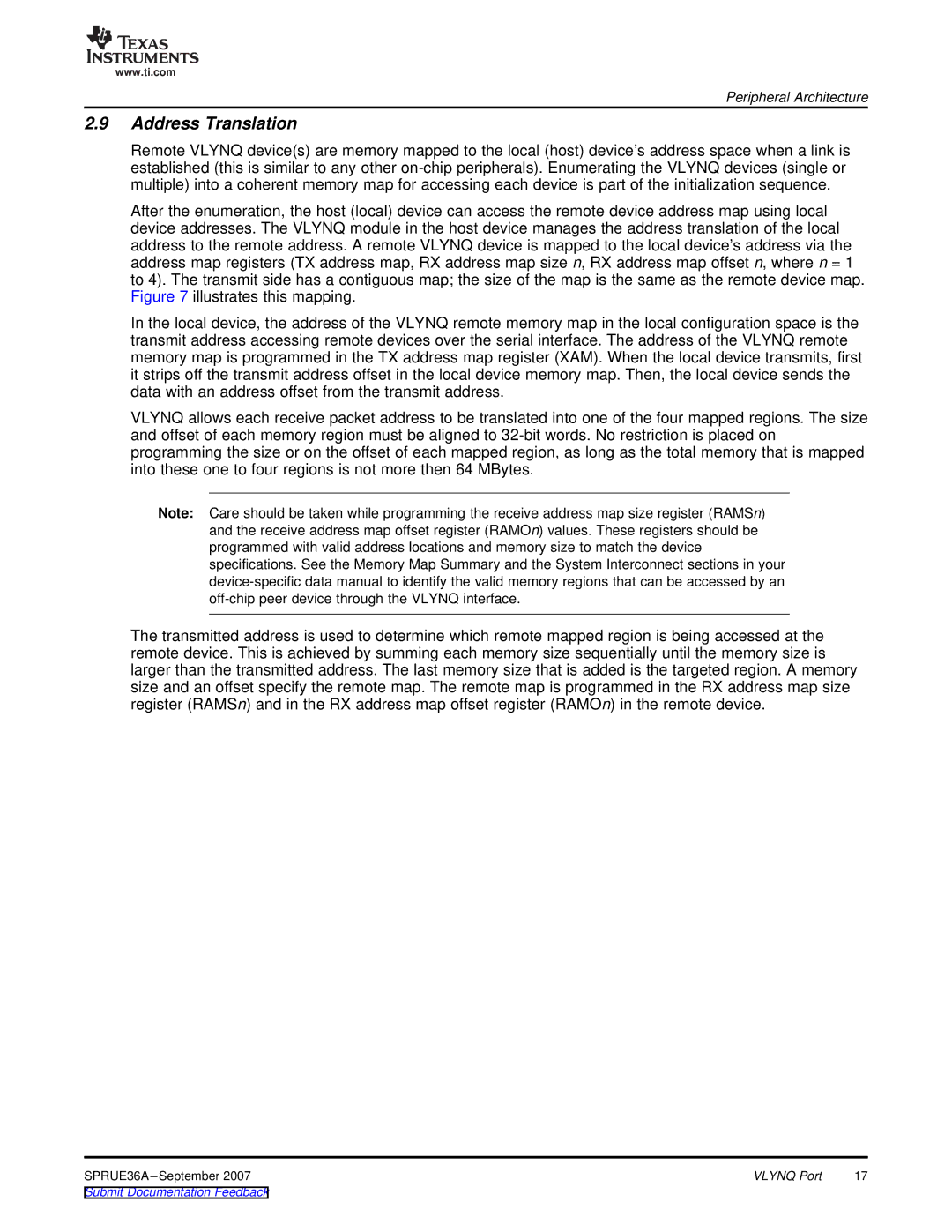
www.ti.com
Peripheral Architecture
2.9Address Translation
Remote VLYNQ device(s) are memory mapped to the local (host) device’s address space when a link is established (this is similar to any other
After the enumeration, the host (local) device can access the remote device address map using local device addresses. The VLYNQ module in the host device manages the address translation of the local address to the remote address. A remote VLYNQ device is mapped to the local device’s address via the address map registers (TX address map, RX address map size n, RX address map offset n, where n = 1 to 4). The transmit side has a contiguous map; the size of the map is the same as the remote device map. Figure 7 illustrates this mapping.
In the local device, the address of the VLYNQ remote memory map in the local configuration space is the transmit address accessing remote devices over the serial interface. The address of the VLYNQ remote memory map is programmed in the TX address map register (XAM). When the local device transmits, first it strips off the transmit address offset in the local device memory map. Then, the local device sends the data with an address offset from the transmit address.
VLYNQ allows each receive packet address to be translated into one of the four mapped regions. The size and offset of each memory region must be aligned to
Note: Care should be taken while programming the receive address map size register (RAMSn) and the receive address map offset register (RAMOn) values. These registers should be programmed with valid address locations and memory size to match the device specifications. See the Memory Map Summary and the System Interconnect sections in your
The transmitted address is used to determine which remote mapped region is being accessed at the remote device. This is achieved by summing each memory size sequentially until the memory size is larger than the transmitted address. The last memory size that is added is the targeted region. A memory size and an offset specify the remote map. The remote map is programmed in the RX address map size register (RAMSn) and in the RX address map offset register (RAMOn) in the remote device.
SPRUE36A | VLYNQ Port | 17 |
